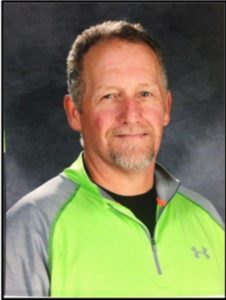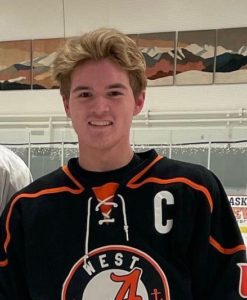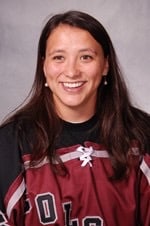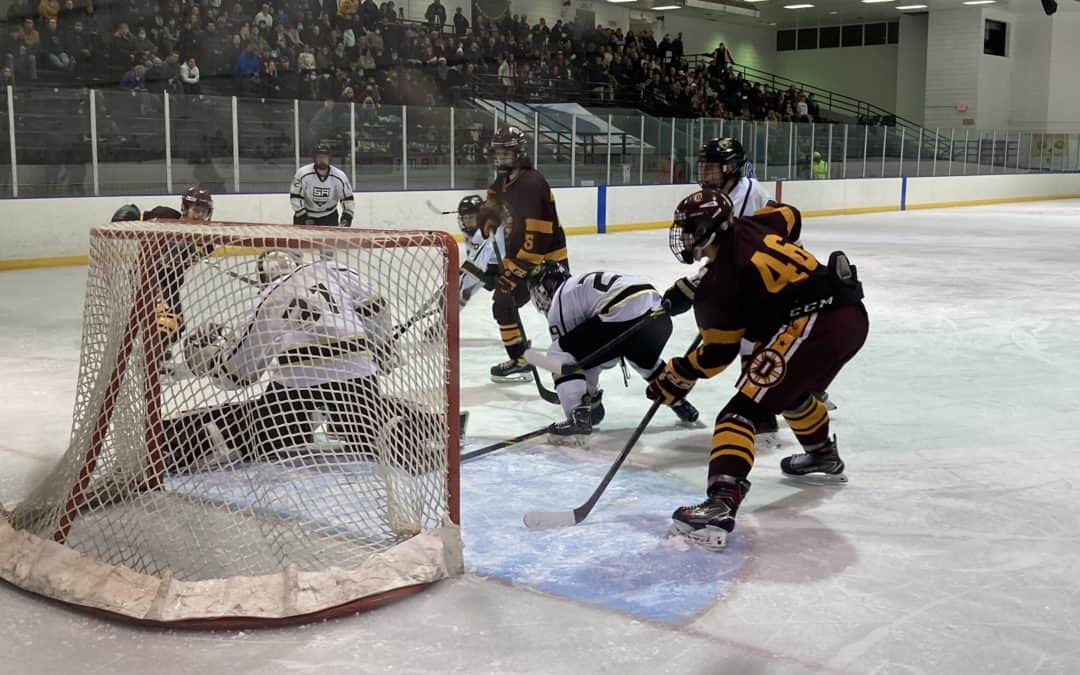At the ripe old age of 17, Ian Keim gleefully harkened back to one of his earliest hockey memories.
“In third grade, we were on a travel team with (new UAA coach Matt) Shasby at a big tournament down in Blaine, Minn.,” the West High senior recalled. “We ended up winning the championship in overtime.
“I buried the game winner, a tap in from the goal line.”
Keim can still feel that immediate burst of energy.
Tana Carlson, 14, is a Dimond freshman and member of the Dimond-West girls team. While scoring goals may be the obvious – ahem – goal for all who lace up the skates, she said the euphoric moment of joy and sense of accomplishment compares to little else.

Tana Carlson
“For a few seconds you’re so proud of yourself and know all the hard work has paid off,” said Carlson, the daughter of former UAA and North Dakota player Brandon Carlson. “Everything else just kind of goes away as you celebrate with your teammates.”
The eight Cook Inlet Conference boys squads and four Anchorage Girls High School Hockey League teams are currently on breaks. The next games are scheduled for Jan. 7. With the holiday hiatus, what better time to go at goal scoring? What helps make a sniper snipe?
Natural talent is a plus. See two-time Stanley Cup champion Scott Gomez. En route to cementing himself as Alaska’s most accomplished hockey aficionado, he scored 56 goals for East High in 1996. In 1982, fellow T-bird skater Steve MacSwain poured in 55 goals for East.
We’re not seeing those kinds of eye-popping numbers thus far.
On the CIC boys side, Bartlett senior Bradley Beals and South senior Gavin Fox lead the league with 12 goals in seven and nine games played respectively. For the girls, Chugiak-Eagle River senior Rian Runyan (four games played) and Dimond-West junior Khenzie Connick (five games) top the scoring race with six goals each.
The Thunderbirds duo of Gomez and MacSwain are clearly examples of goal-scoring excellence here in Alaska. What’s done so differently by the likes of them and so few others to really fill the scoresheet?
On Dec. 8, Dimond boys coach Dennis Sorenson quietly surpassed another legendary milestone when the Lynx defeated South 4-3 in overtime. Sorenson posted his 600th coaching victory in nearly 30 years with the gig and he’s set to coach his 800th game when Dimond meets Homer in non-conference action Jan. 14.
“Winning the game met more than anything,” Sorenson said.

Dennis Sorenson
Sorenson is the seventh coach in U.S. prep hockey history to reach the 600-win total, according to the National Federation of State High School Association website.
It’s hard to question Sorenson’s well-earned bonafides. He’s also a UAA Hall of Famer and the second-leading scorer in the 40-year history of the program.
Sorenson knows goal scoring. He said everything starts with confidence.
“Pure goal scorers believe in themselves more than non-goal scorers,” Sorenson said. “When they shoot the puck, they’re shooting to score. Too many players shoot to shoot.
“And that really goes back to a skill and a confidence. You can see a goaltender, but you also see what’s behind the goalie. You have to be able to see those targets.”
Elite players like Alex Ovechkin, Connor McDavid, Hayley Wickenheiser and Hilary Knight think they’re scoring on every shot. But they also move constantly and find open ice when none seems available.
“It can be tricky, trying to get lost against a defender,” said Keim, who’s scored nine goals in seven games with the Eagles this season and notched 24 regular-season goals as a sophomore when West won the 2020 First National Cup state championship. “Soft spots are out there, you have to evade opponents the best you can.”

Ian Keim
Other healthy habits for goals scorers include going to ever-popular “dirty areas” in the slot and front of the cage, the ability to shoot off the pass in no time at all and changing shot angles via stick, shoulder or eye movement.
“You like to think about the ability to find those spots or get a shot off a certain way,” said Carlson, who’s tied for second in scoring with seven points (two goals, five assists). “But you don’t want to think too much because things tend to go off course.”
Those tasked with stopping snipers face their own set of dilemmas. Kate Wolgemuth is Chugiak-Eagle River’s assistant coach. She was a “very defensive defenseman” when she played collegiately at Colgate from 2004-2008.
“We know about confidence, but goal scorers are also big on risk,” Wolgemuth said. “My head was always on a swivel and you’re always hyper aware of where those players are on the ice.”

Kate Wolgemuth
Sorenson said more balanced players are being coached up at all levels. The days of power-play and penalty-kill specialists aren’t seemingly like they’ve been in the past.
“You’re not seeing as many elite (goal scorers),” he said. “But I don’t want to say it’s a lost art.”
At least he’ll always have his hockey history with two of Alaska’s best.
“We always tried to create a defensive strategy against Gomez and were able to once in a while,” Sorenson said. “If he got one or two strides, you were done. He had such unique head and shoulder movement.
“He was such a strong man-child back then. But we had some great battles.”
Sorenson said MacSwain excelled with speed and a quick release. The two spent hours together at MacSwain’s childhood home in the early 80s shooting pucks in the garage.
“Stevie’s family were big UAA boosters and I would go over a lot with the ‘Adopt a Seawolf’ program,” Sorenson said. “We still have a good laugh about those days because we don’t see kids practicing shooting nearly as much.”

Steve MacSwain

